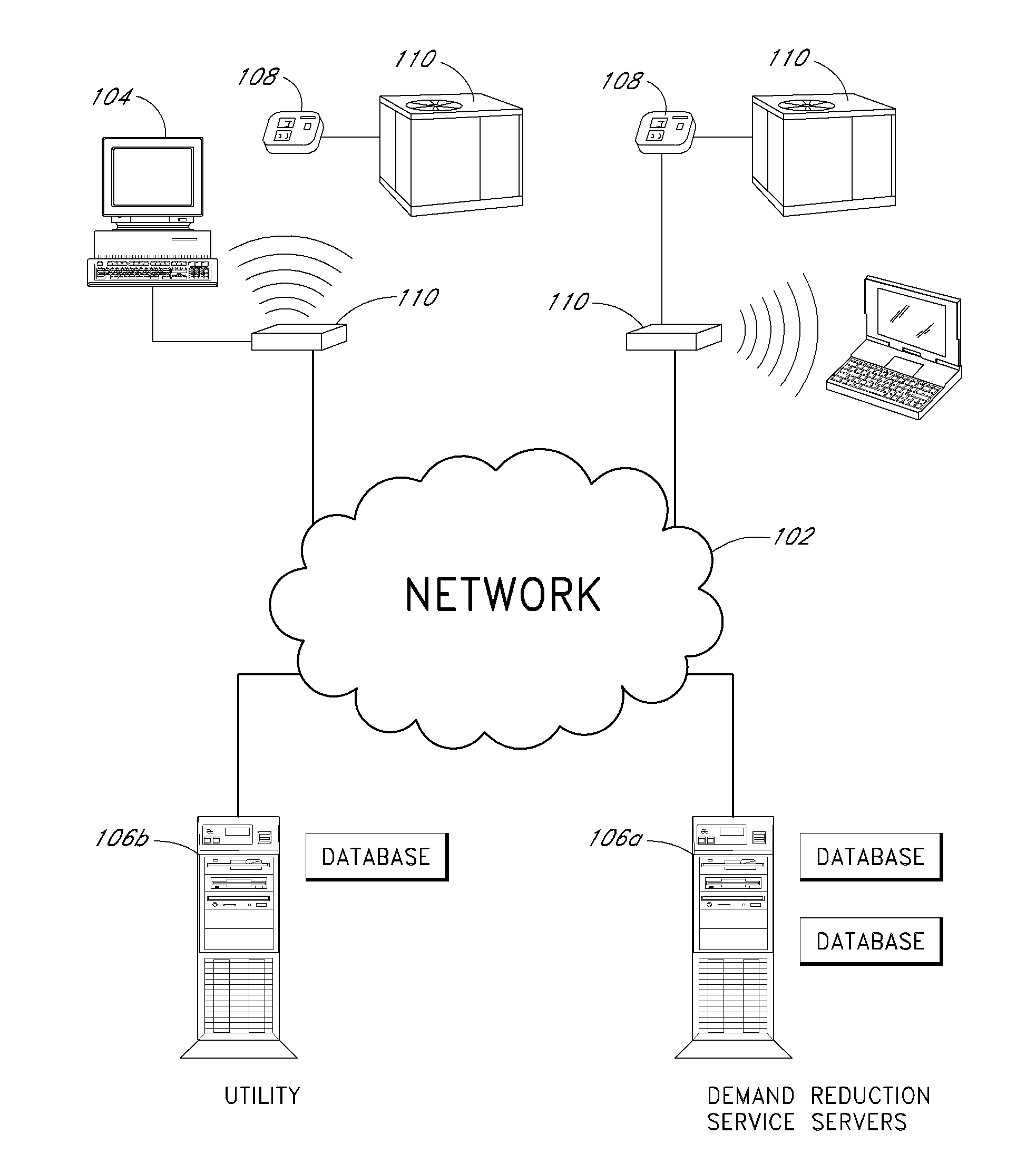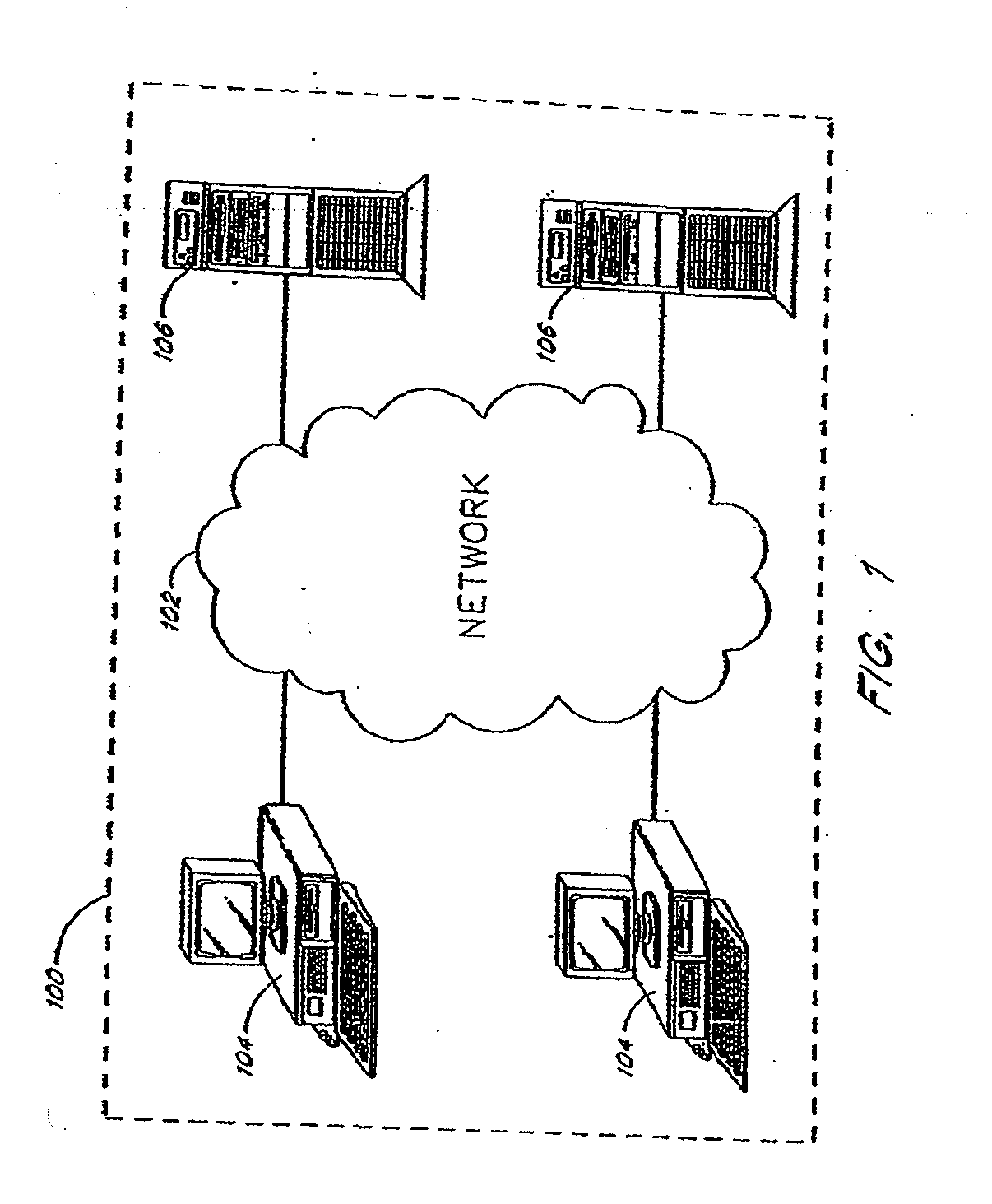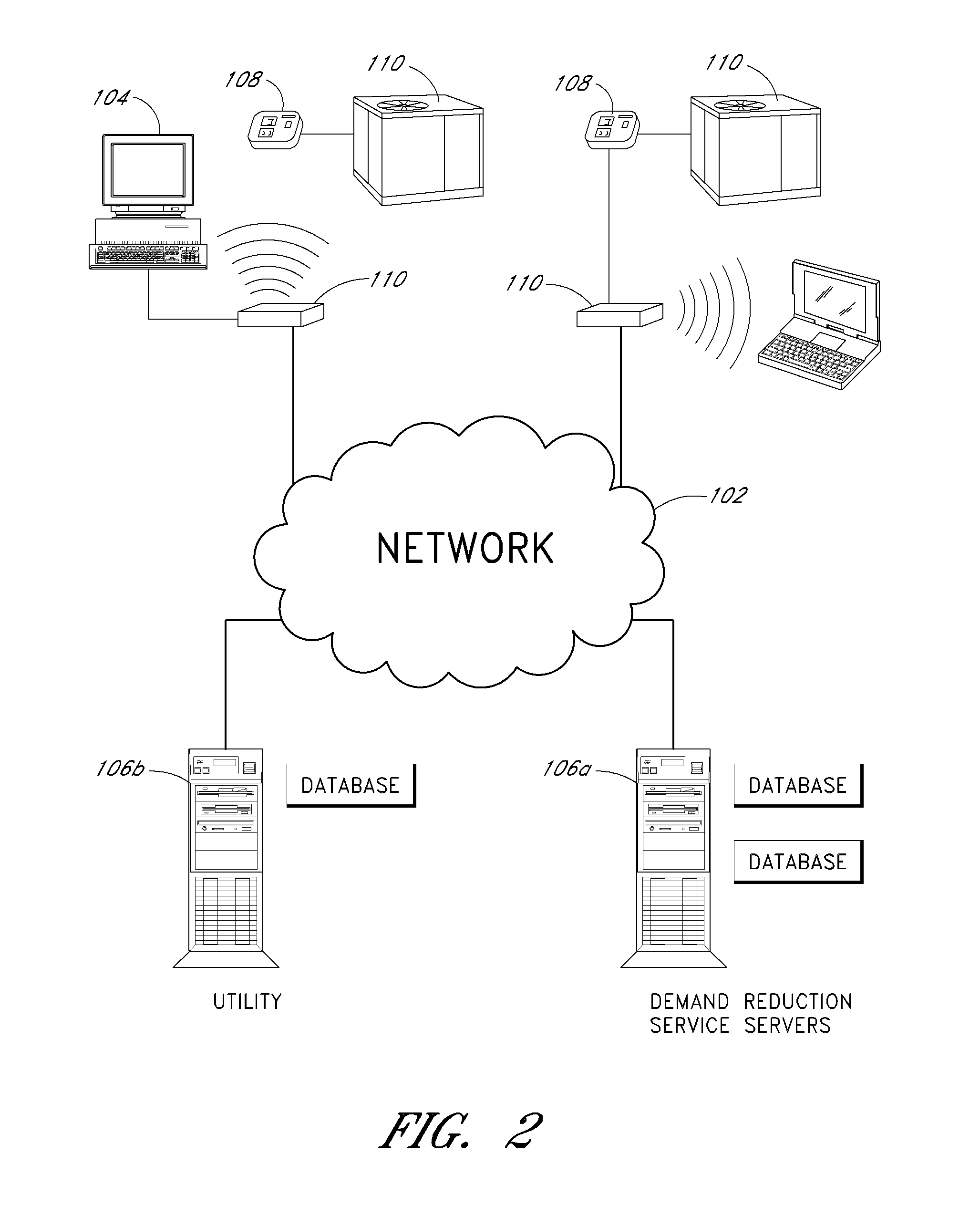[0009]There are many other sources of information that could be used to increase comfort, decrease energy use, or both. For example, outside temperature and
humidity strongly affect subjective comfort. On a 95 degree, 90 percent
humidity day in August, when people tend to dress in lightweight clothing, a house cooled to 70 degrees will feel cool or even uncomfortably cold. On a below-freezing day in January, when people tend to wear sweaters and heavier clothes, that same 70 degree home will feel too warm. It would therefore be advantageous for a thermostat system to automatically incorporate information about external weather conditions when setting the desired temperature.
[0011]These problems can be reduced or eliminated through use of additional remote temperature sensors connected to the thermostat's control circuitry. However, such systems require additional hardware, additional thermostat complexity, and skilled installation and configuration.
[0015]The cost to an
electric utility to produce power varies over time. Indeed, the cost of production between
low demand and
peak demand periods can vary by as much as an
order of magnitude. Traditionally, residential customers paid the same price regardless of time or the cost to produce. Thus consumers have had little financial incentive to reduce consumption during periods of high demand and high production cost. Many electric utilities are now seeking to bring various forms of variable rates to the retail energy markets. Under such schemes, consumers can reduce costs by taking into account not just how much energy they use, but when they use it.
[0016]Thus many consumers now can see real benefits from optimizing not just the total number of kilowatt-hours of
electricity consumed, but also optimizing when it is used. The optimum strategy for energy use over time will vary based upon many variables, one of which is the
thermal mass of the structure being heated or cooled. In a structure with high
thermal mass, heating and cooling can effectively be shifted away from high cost periods to lower cost “shoulder” periods with little or no effect on comfort. If, for example, a utility charges much higher rates on hot summer afternoons, it is likely that pre-cooling a high-
thermal mass structure just before the high-cost period and then shutting down the
air conditioning during the peak will allow the house to remain comfortable. But in a house with low thermal
mass, the benefits of pre-cooling will quickly dissipate, and the house will rapidly become uncomfortable if the
air conditioning is shut off. Thus it would be advantageous for a
temperature control system to take thermal
mass into account when setting desired temperatures.
[0018]Most of these problems are likely to manifest themselves in the form of higher energy bills. But the “signature” of each different problem can be discerned from the way in which each such problem affects the cycle times of a given HVAC system over time and relative to weather conditions and the performance of other HVAC systems in other houses. If two otherwise identical houses are located next door to each other and have gas furnaces, but one is rated at 50,000 BTUs and the other is rated at 100,000 BTUs, the cycle times for the higher-capacity furnace should be shorter than for the lower-capacity unit. If both of those same houses have identical furnaces, but one has a clogged filter, the cycle times should be longer in the house with the clogged filter. Because
cycling of the HVAC system is controlled by the thermostat, those differences in
cycle time would be reflected in the data sensed by and control signals generated by the thermostat. It would be advantageous for a thermostat system to be able to use that information to diagnose problems and make recommendations based upon that data.
[0024]Combining these data sources will also allow the
server to calculate the effective thermal
mass of the structures conditioned by those thermostats. By combining data from multiple thermostats in a given neighborhood, the system can correct for flaws in the location of a given thermostat, and can evaluate the efficiency of a given system, as well as assist in the diagnosis of problems and malfunctions in such systems.
 Login to View More
Login to View More  Login to View More
Login to View More 


